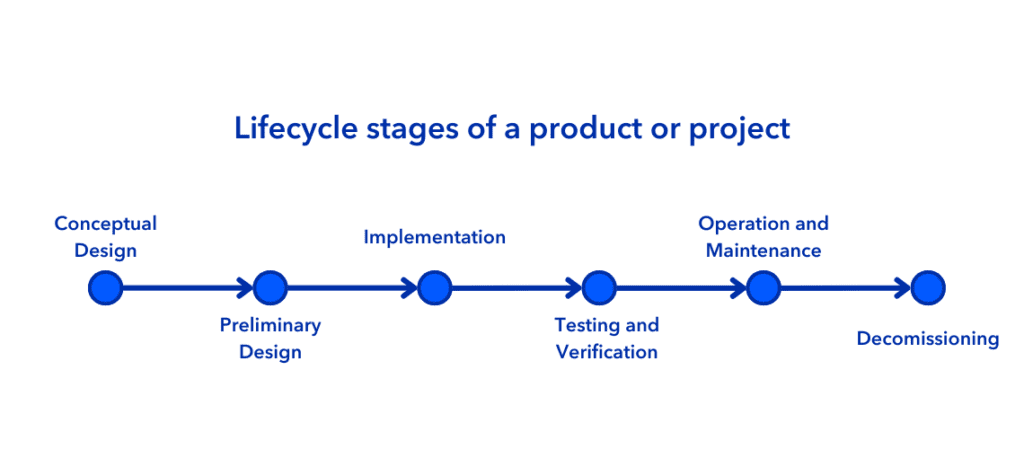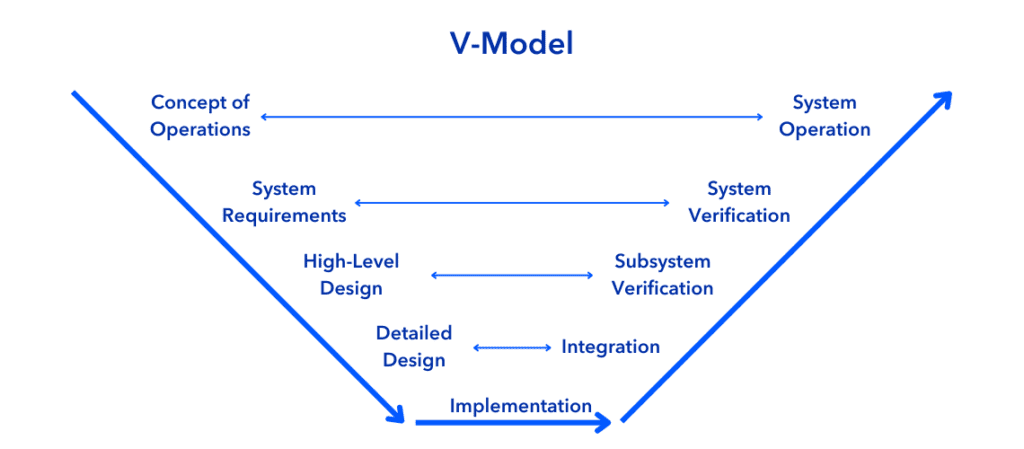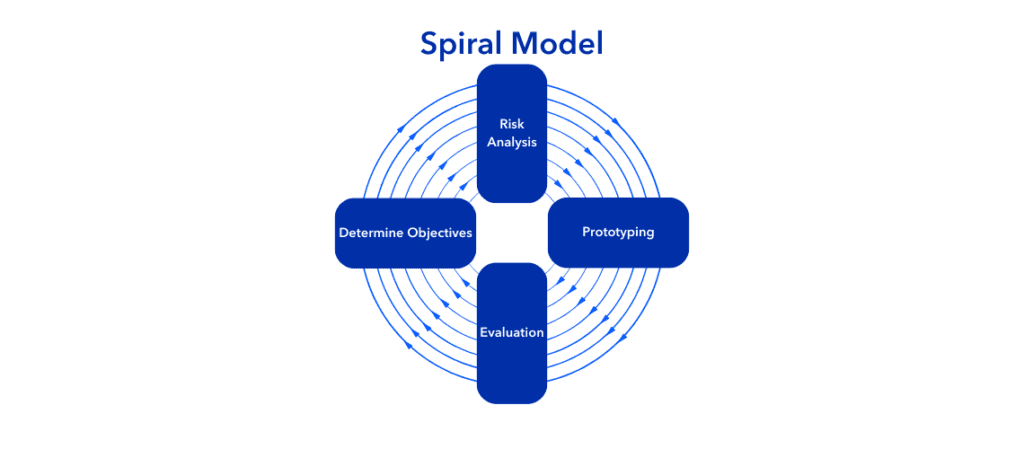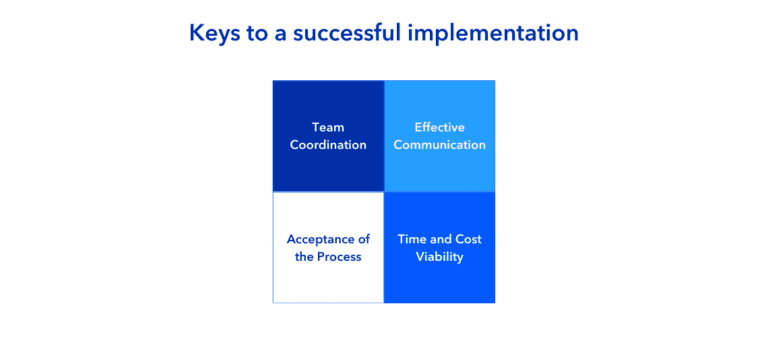In today’s rapidly evolving technological landscape, the development of complex products—from smartphones to spacecraft—demands a structured and holistic approach to design, development, and deployment. This is where systems engineering comes into play. Although often overshadowed by more prominent disciplines like software or mechanical engineering, systems engineering is the critical backbone that ensures all components of a product work together seamlessly to meet user needs.
But what exactly is systems engineering, and why is it so crucial for product development? In this blog post, we’ll explore the fundamentals of systems engineering, its methodologies, and how it can be applied to enhance product development processes across various industries.
What is Systems Engineering?
Systems engineering is an interdisciplinary approach that focuses on designing, integrating, and managing complex systems over their life cycles.
Unlike traditional engineering disciplines, which may focus on individual components or subsystems, systems engineering takes a holistic view. It seeks to understand and optimize the interactions between different parts of a system to ensure that the final product meets its intended purpose, performs reliably, and can be maintained or upgraded as needed.
We now know which is the goal of of this approach. We can continue by explaining the role of a systems engineer.
Systems engineers act as a bridge between various engineering disciplines and stakeholders. They are responsible for defining the system’s architecture, identifying requirements, managing trade-offs, and ensuring that all elements of the system work together as intended. This role requires a deep understanding of both the technical aspects of the system and the broader context in which it operates, including considerations like cost, schedule, risk, and user satisfaction.
Key Concepts in Systems Engineering
To fully grasp the importance of systems engineering, it’s essential to understand several key concepts that form the foundation of this discipline.
System Life Cycle:
The system life cycle is the series of phases that a system goes through from conception to decommissioning. These phases typically include:
Additional concepts:

Defining the system’s objectives, scope, and high-level requirements.
Creating detailed specifications for each component and subsystem.
Building and integrating the system components.
Ensuring that the system meets all requirements and functions as intended.
Deploying the system and performing ongoing maintenance.
Retiring the system when it is no longer needed or has become obsolete.
Requirements Engineering
Requirements engineering is the process of defining, documenting, and maintaining the requirements for a system. This is a critical step in systems engineering because it sets the foundation for all subsequent design and development activities. Requirements must be clear, measurable, and traceable to ensure that the final system meets the needs of its users.
System Architecture
System architecture refers to the high-level structure of a system, including its components, their relationships, and the principles guiding its design and evolution. A well-defined architecture serves as a blueprint for the system, helping to ensure that all components work together harmoniously and that the system can be scaled, modified, or maintained as needed.
Integration and Verification
Integration involves assembling the various components and subsystems into a complete system. This process often reveals issues that weren’t apparent during the design phase, making it a critical step in the systems engineering process.
Verification, on the other hand, involves testing the system to ensure that it meets all specified requirements. This can include functional testing, performance testing, and reliability testing.
Risk Management
Risk management is a systematic approach to identifying, assessing, and mitigating risks that could impact the success of a system. In systems engineering, risk management is an ongoing process that begins during the conceptual design phase and continues throughout the system’s life cycle.
Systems Engineering Methodologies
There are several methodologies used in systems engineering to guide the development of complex systems. These methodologies provide a structured approach to managing complexity and ensuring that all aspects of the system are considered.
V-Model
The V-Model is one of the most widely used systems engineering methodologies. It visualizes the development process in the shape of a “V,” with the left side representing the decomposition of requirements and system design and the right side representing integration and verification.

Defines the system’s operational scenarios and high-level requirements.
Captures the detailed requirements for the system.
Specifies the architecture and design of the system.
Develops detailed specifications for each subsystem and component.
Builds the system components.
Assembles the system and performs integration testing.
Verifies that the system meets its requirements.
The V-Model emphasizes verification at each stage of development, ensuring that the final system meets its intended purpose.
Spiral Model
The Spiral Model is an iterative approach to systems engineering that emphasizes risk management. It combines elements of both the V-Model and the Waterfall Model, with each iteration of the spiral representing a cycle of design, prototyping, testing, and evaluation.

Identify the objectives, alternatives, and constraints for the system.
Assess the risks associated with each alternative and develop strategies for mitigating them.
Develop a prototype or a preliminary version of the system.
Evaluate the prototype against the objectives and requirements.
The Spiral Model is particularly useful for projects with high levels of uncertainty or risk. It allows for flexibility and iterative refinement of the system.
Agile Systems Engineering
Agile Systems Engineering combines the principles of Agile software development with systems engineering practices. It emphasizes flexibility, collaboration, and iterative development, making it well-suited for projects where requirements are likely to evolve over time.
Capture the needs and requirements of the users in the form of user stories.
Plan the development of the system in short iterations or sprints.
Continuously integrate and test the system components.
Foster close collaboration between systems engineers, developers, and stakeholders.
Agile Systems Engineering allows for rapid adaptation to changing requirements and encourages continuous feedback from users and stakeholders.
The Application of Systems Engineering in Product Development
Now that we’ve covered the fundamentals of systems engineering, let’s explore how these principles and methodologies can be applied to enhance product development across various industries.
Automotive Industry
In the automotive industry, systems engineering plays a crucial role in the development of modern vehicles, which are increasingly complex and feature-rich. A typical car today consists of thousands of interconnected components, including mechanical systems, electronic control units (ECUs), software, and sensors.
Systems engineering ensures that these components work together seamlessly to deliver a safe, reliable, and high-performance vehicle.
An example where systems engineering is useful can be found within the development of electric vehicles. Developing them presents unique challenges, such as battery management, energy efficiency, and charging infrastructure. Systems engineering helps address these challenges by integrating various subsystems—such as the battery management system, powertrain, and user interface—into a cohesive whole. This holistic approach ensures that the EV meets performance targets, complies with safety regulations, and delivers a positive user experience.
Aerospace Industry
The aerospace industry has long been a pioneer in the application of systems engineering. The development of aircraft, spacecraft, and satellites involves extreme levels of complexity, with strict requirements for safety, reliability, and performance.
In spacecraft development, systems engineering is essential for managing the interactions between various subsystems, such as propulsion, communication, power, and thermal control. Systems engineers work closely with domain experts to ensure that all subsystems are integrated effectively and that the spacecraft can operate reliably in the harsh environment of space.
As expected in this industry, this involves extensive testing, simulation, and verification to mitigate risks and ensure mission success while keeping everybody safe.
Consumer Electronics
In this industry, systems engineering is key to developing products that are not only functional but also user-friendly, reliable, and cost-effective. From smartphones to smart home devices, consumer electronics products often involve the integration of hardware, software, and user interfaces.
You can witness this benefits in the development of a smartphone. A smartphone involves the integration of numerous subsystems, including the processor, display, battery, camera, and operating system integration. Systems engineering ensures that these subsystems work together to deliver a seamless user experience. This includes optimizing power consumption, managing heat dissipation, and ensuring that the hardware and software are tightly integrated.
Healthcare Industry
The healthcare industry is increasingly reliant on advanced medical devices and systems to diagnose, treat, and monitor patients. Systems engineering plays a critical role in ensuring that these devices are safe, reliable, and effective.
Similarly to consumer electronics, the development of medical imaging systems, such as MRI and CT scanners, involves the integration of complex hardware and software components. Systems engineering ensures that these components work together to produce high-quality images while minimizing patient risk. This involves optimizing image processing algorithms, managing electromagnetic interference, and ensuring that the system meets regulatory standards to keep everybody safe and the results accurate.
Enhancing Product Development with Systems Engineering
So, how exactly does systems engineering enhance product development? Here are several ways in which it adds value to the development process:
There are five ways in which we can use systems engineering to enhance any project or product which are listed below:
- Improved requirement management.
- Better risk managment.
- Enhanced integration and interoperability.
- Increased flexibility and adaptability.
- Optimized performance and cost efficiency.
How can this be achieved?
Remember that one of the key benefits of systems engineering is its focus on requirement management. By clearly defining and managing requirements from the outset, systems engineering helps ensure that the final product meets user needs and expectations. This reduces the risk of costly redesigns or project delays due to overlooked or misunderstood requirements.
Since this involves a systematic approach to risk management, which helps identify and mitigate potential issues early in the development process. By addressing risks proactively, systems engineering reduces the likelihood of unexpected problems arising during later stages of development, which can lead to project delays or failures. As products become increasingly complex, the integration of multiple subsystems and components becomes more challenging. Systems engineering ensures that these components are integrated effectively, reducing the risk of incompatibilities or performance issues.
By following the different methodologies, you’ll find that it provides a structured approach to managing change and adapting to new requirements. This is particularly important in industries where technology evolves rapidly, and product development cycles are short. Finally, by taking a holistic approach to product development, systems engineering helps optimize the performance of the final product while balancing cost, schedule, and other constraints. This leads to more efficient use of resources and a higher likelihood of meeting project goals.
Challenges in Implementing Systems Engineering
While systems engineering offers numerous benefits, it is not without its challenges. Implementing systems engineering practices in product development can be difficult, particularly in organizations that are not accustomed to this approach or aren’t willing to embrace a change in their processes and work culture.
In some cases where organizations that are used to traditional engineering approaches may resist adopting systems engineering practices. This resistance can stem from a lack of understanding of the benefits, as well as concerns about the potential impact on project timelines and budgets associated with the changes involved. But those who do want to pursue this approach may need to be careful and not skip important considerations while doing it.
Systems engineering can be particularly challenging in projects that involve large-scale systems with many interconnected components. Managing the complexity of these systems requires a high level of expertise and coordination across multiple teams and disciplines. To achieve this, communication is vital for it to succed. Communication can ensure an effective systems engineering implementation. Which requires close collaboration between different teams and stakeholders, including engineers, project managers, and customers. This can be challenging in large organizations where communication barriers exist or where teams are geographically dispersed and aren’t familiar with other members of the organization or project at hand.
There is antother consideration that is important to take into account when implementing this approach. Systems engineering practices can initially increase the cost and time required for product development. This is because systems engineering involves additional steps, such as requirement analysis, risk management, and verification, which can add to the overall project timeline and budget.

Considering everything previously mentioned above:
Systems engineering is a critical discipline that plays a vital role in the successful development of complex products. By taking a holistic approach to design, integration, and management, systems engineering ensures that all components of a system work together seamlessly to meet user needs and expectations.
The application of systems engineering in product development offers numerous benefits, including improved requirement management, better risk management, enhanced integration and interoperability, increased flexibility and adaptability, and optimized performance and cost efficiency. However, implementing systems engineering practices also comes with its inherent challenges, such as managing complexity, overcoming resistance to change, and fostering effective communication and collaboration from all members involved.
Despite these challenges, the value of systems engineering in product development cannot be overstated. As products continue to become more complex and the demand for innovation grows, systems engineering will remain a crucial discipline for ensuring that new products are not only functional and reliable but also meet the evolving needs of users and stakeholders.
In today’s competitive market, where the success of a product can hinge on its ability to integrate cutting-edge technologies and deliver a seamless user experience, systems engineering is not just an option, it’s a necessity. By embracing systems engineering principles and methodologies, organizations can enhance their product development processes, reduce risks, and deliver products that exceed customer expectations.
Whether you’re developing the next generation of products such as: electric vehicles, electronic devices or even spacecraft systems. This approach to product development is the key to unlocking the full potential of your development efforts.
It’s time to recognize the importance of systems engineering and make it an integral part of your development strategy.



